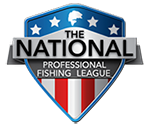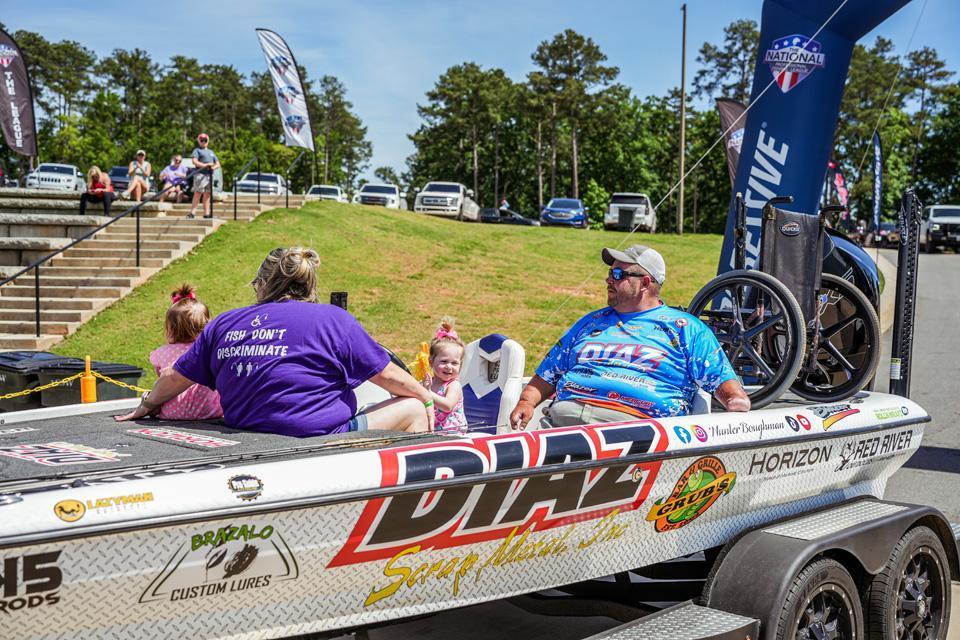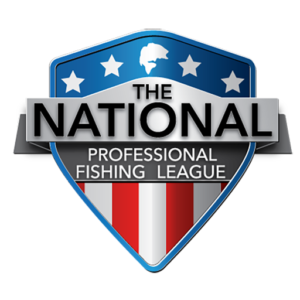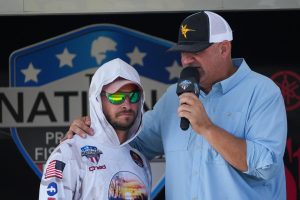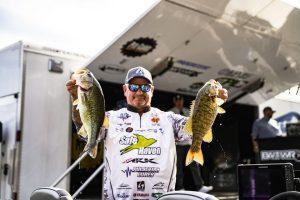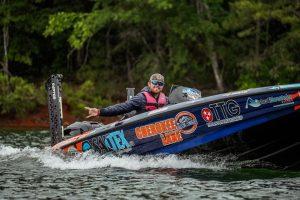Story by Hunter Baughman | Photos by Tanner & Travis Lyons
This will be my 52nd article written for the NPFL, which means you’ve read one year’s worth of my content. Thank you so much for following along! It’s an honor to share my thoughts and tips with you every week.
I hope you’ve had a chance to try out some of the summertime tips we discussed last week. This week finds me headed to Logan Martin for some pre-practice. This will be the last week we can be on the water before our 27-day off-limit period. Even though I’ve been there once before, I’m hoping to see more of the lake and get a feel for how it fishes in late summer/early fall. I thought this would be a great time to give some tips on how to effectively break down a lake you’ve never seen before.
First, there is plenty of work to do before you leave the house. You can find YouTube videos for nearly any lake in the country. I don’t watch these videos to see specific spots or lures. I watch to get an idea of what the lake looks like and what techniques play during the timeframe I will be there. For example, if I watch five videos there’s a good chance they will show five different techniques. But if all five are using their various techniques to fish docks, then I know docks will be a player. Conversely, if five videos show people fishing five different types of cover and structure—but they are all throwing a jig—then I can deduct a jig will be a big factor. Also, if I can’t find a video for the right time of year, then a little detective work will go a long way. For example, if all the videos I find are of throwing crankbaits in the winter—but I’ll be there in summer—what can I see in the background? If I see lots of docks, there’s a good chance fish will use those in the heat of summer. I will also look through past tournament results to see if certain areas are mentioned multiple times and what are the average winning weights.
Then it’s time to go to the map. There are two types of maps that are useful. Google Earth and a contour map. I start with Google Earth. I find those general areas I’ve already identified from the tournament reports. From there I can take a closer look at what is in the area that looks promising. Remember to use the history option to look at the lake during a low water season. Once I have identified areas on Google Earth I can move over to the contour map and study those areas for a starting point.
Lastly, it’s time to go to the lake. It won’t feel overwhelming after all that study. Odds are that one section of the lake will be more consistent than others. I like to see the majority of the lake just to rule areas in or out. In a three-day practice period, I try to break the lake into thirds and look at a section each day, spending most of my time on the areas I found on a map but looking at other areas too. A lot of times the places you’ve chosen ahead of time might not be the “deal” but the might clue you in enough for you to find the right area. Maybe it’s a bite on a certain bait that you can take across the lake. Or maybe it’s a certain type of structure that can be duplicated.
Ultimately, it doesn’t matter if you land on them immediately or in the last hours of the last day of practice. Just putting in the effort ahead of time will give you the confidence and familiarity you need to have an efficient and successful practice.
Catch y’all next week!
Hunter Baughman – Angler Profile
